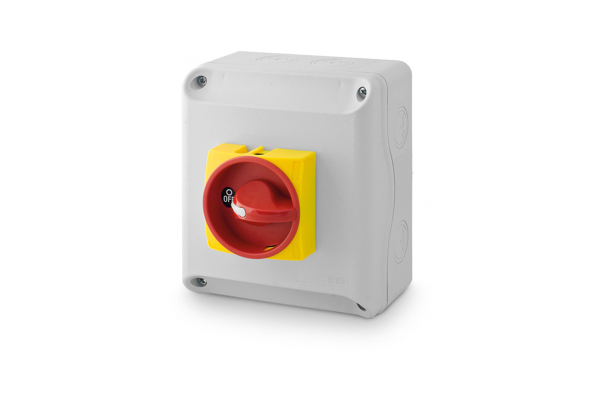
Modern systems rely heavily on precise control and safety mechanisms to ensure efficiency and reliability. Differential pressure switches and Disconnect Switches play a critical role in achieving these objectives across various industries. These devices monitor, control, and protect systems, making them indispensable in applications ranging from HVAC systems to industrial automation.
By responding to specific pressure changes or enabling safe electrical disconnections, these switches enhance system performance and safeguard equipment. Their versatility and adaptability have made them essential in addressing the growing demands of complex technological environments. Understanding their applications highlights their importance in modern engineering solutions.
Differential Pressure Switches: Monitoring System Variations
Differential pressure switches play a critical role in identifying and managing pressure differences within various systems. They ensure that components operate within predefined thresholds, preventing damage caused by excessive pressure changes. These switches are used in HVAC systems, industrial processes, and filtration units where consistent performance is essential.
In HVAC systems, they monitor airflow by detecting pressure variations across filters, fans, or ducts. For instance, a clogged filter triggers the switch to signal maintenance needs, enhancing system efficiency. In industrial applications, differential pressure switches safeguard machinery by providing alarms or shutdown commands when pressure imbalances occur. Filtration systems rely on them to detect pressure drops that indicate blockages or degraded efficiency in the filters.
With applications ranging from enhancing equipment longevity to ensuring consistent functionality in critical processes, these switches improve reliability in diverse environments.
Ensuring System Safety During Maintenance with Disconnect Switches

Disconnect switches play an essential role in isolating electrical systems during maintenance. They ensure the complete disconnection of power sources, preventing accidental energization of equipment and reducing risks to personnel. Designed for systems across industries such as manufacturing, energy, and HVAC, their application enhances safety protocols to protect workers and equipment.
Technicians engage disconnect switches before performing maintenance. This process eliminates the flow of electrical energy to the designated part of a circuit, enabling safe inspection, repair, or replacement of components. In high-voltage scenarios like industrial automation systems, disconnect switches provide a visible break, ensuring clear verification of isolation.
Standards and regulations often mandate the use of disconnect switches for compliance. In accordance with industry safety codes, these switches support lockout/tagout procedures, creating an added security layer and minimizing human errors. By integrating disconnect switches, facilities maintain operational safety while adhering to legal requirements.
Common Industrial Applications of Pressure Monitoring Devices
Pressure monitoring devices, including differential pressure switches, are integral to essential industrial processes. They support system efficiency, safety, and reliability through versatile applications.
- HVAC Systems
Differential pressure switches monitor airflow across components like filters, fans, and dampers. They detect pressure changes caused by clogged filters or malfunctioning equipment to signal maintenance requirements, ensuring optimal air handling and energy efficiency. - Filtration Systems
These switches identify pressure drops across filters, indicating blockages or contaminants that reduce filtration performance. Timely detection prevents equipment strain and maintains system efficiency, especially in water treatment or chemical processing systems. - Boiler Systems
Boilers rely on pressure monitoring devices to maintain precise pressure levels within chambers. Differential pressure switches detect excessive or insufficient pressure, activating alarms or shutdown protocols to prevent hazardous conditions. - Industrial Automation
Automated systems with pneumatic or hydraulic components use differential pressure switches to monitor the pressure fluctuations critical to regulating processes. These switches safeguard machinery, reduce downtime, and enhance productivity in manufacturing facilities. - Process Industries
Applications in oil, gas, and petrochemical plants leverage differential pressure switches to monitor pipelines and vessels. They ensure structural integrity by detecting pressure imbalances that might indicate leaks or blockages, minimizing environmental risks and process interruptions.
Strategic usage of differential pressure switches ensures that industries maintain smooth operations and avoid equipment failures, aligning with functional and safety standards.
Role of Disconnect Switches in Emergency Shutdowns
Disconnect switches ensure the rapid isolation of electrical systems during emergencies. By cutting off power flow immediately, these switches prevent potential hazards like equipment damage, electrical fires, and risks to personnel. Their design enables quick, decisive action, which is critical in high-risk situations.
In industrial facilities, disconnect switches protect sensitive machinery by isolating power in case of system faults or overload conditions. In energy sectors, they facilitate the controlled shutdown of electrical networks during grid failures or equipment malfunctions. When combined with automated systems, these switches further enhance response times, reducing downtime and danger.
Compliance with safety standards often integrates disconnect switches into emergency protocols. Industries rely on them to meet regulatory requirements and support incident containment strategies. Their visible isolation feature simplifies manual verification, offering additional safeguards in critical environments.
Key Benefits of Using Adjustable Differential Switches
Adjustable differential pressure switches offer precise control over system performance by enabling users to configure pressure thresholds according to specific operational needs. This flexibility enhances equipment efficiency by maintaining ideal pressure conditions across HVAC, filtration, and industrial systems. When systems operate efficiently, they experience reduced wear, leading to extended component lifespans.
These switches provide greater adaptability for diverse applications. For example, in HVAC systems, users can set thresholds to monitor varying airflow conditions across filters based on operational demands. Similarly, in industrial automation, adjustable models accommodate dynamic processes by tailoring pressure limits to different production parameters. This customization ensures better system reliability and avoids unnecessary shutdowns or damage due to mismatched settings.
Safety is improved as adjustable switches prevent dangerous scenarios linked to overpressure or underpressure. Configuring precise thresholds allows industries, including oil and gas, to detect pressure anomalies early, minimizing hazards like leaks and blockages. By aligning switch settings with system requirements, operational risks across critical industries are mitigated effectively.
Energy efficiency gains are another key advantage. Optimizing pressure levels prevents energy waste from overworking components like pumps or fans. This not only reduces operating costs but also supports sustainability efforts within modern systems utilizing these versatile switches.
Enhancing HVAC Systems with Advanced Pressure Monitoring
Differential pressure switches enhance HVAC efficiency by monitoring pressure changes across critical components like filters, fans, and ducts. They detect when pressure differentials exceed set thresholds, indicating potential issues such as clogged filters or obstructed airflow. Early detection prompts timely maintenance, ensuring optimal system performance and reducing energy consumption.
In air filtration systems, these switches identify pressure drops signaling blockages, which affect air quality and system efficiency. In fan monitoring, they ensure balanced airflow to prevent operational imbalances that stress equipment. By enhancing pressure monitoring, they prolong component lifespans and support consistent environmental conditions.
Adjustable differential pressure switches add further functionality by allowing custom threshold settings. These settings adapt to varying system requirements, improving flexibility in diverse HVAC applications. This adaptability reduces wear, enhances energy efficiency, and ensures precise control of air movement within buildings.
Disconnect switches complement pressure management by securing electrical safety during maintenance. In HVAC systems, they isolate electrical components like compressors or motorized controls, preventing accidental re-energization. This isolation ensures compliance with safety protocols, protecting technicians and equipment while supporting adherence to industry regulations.
Industry Standards for Disconnect Switch Safety Compliance
Industry standards outline strict safety requirements for disconnect switches to ensure the reliable isolation of electrical systems during maintenance or emergencies. Compliance with these standards enhances personnel safety, prevents equipment damage, and supports regulatory adherence.
- OSHA Regulations: The Occupational Safety and Health Administration (OSHA) mandates the use of disconnect switches as part of lockout/tagout procedures under Standard 1910.147. These rules ensure energy sources are isolated before servicing or maintenance to minimize re-energization risks.
- IEC and UL Standards: Disconnect switches must meet International Electrotechnical Commission (IEC) and Underwriters Laboratories (UL) certifications. These standards define construction, performance, and testing requirements to confirm switches provide effective isolation and are safe for specific voltage levels.
- NFPA 70E Compliance: The National Fire Protection Association (NFPA) guides arc flash safety through Standard 70E. Disconnect switches with visible isolation points help meet these guidelines by allowing technicians to verify safe work conditions around high-voltage equipment.
- ANSI/IEEE Specifications: Disconnect switches used in power systems often comply with specifications by the American National Standards Institute (ANSI) and Institute of Electrical and Electronics Engineers (IEEE). These standards ensure the devices can handle fault currents and maintain operational reliability.
- Role in Emergency Protocols: Disconnect switches complying with these standards are integral to emergency safety systems. By immediately cutting off power, they help prevent incidents like electrical fires or system overloads, ensuring rapid crisis management in compliance with established regulations.
Adhering to these standards ensures that disconnect switches operate reliably in modern systems, protecting personnel and equipment while meeting legal safety requirements.
Troubleshooting Pressure Issues Using Reliable Switches
Differential pressure switches offer precise diagnostics for pressure-related problems. They identify irregularities by monitoring pressure across system components like filters, pipelines, or chambers. For example, detecting a sudden pressure drop might indicate a leakage, while a pressure increase could signal a blockage. These switches send alerts when thresholds are breached, enabling timely interventions to prevent damage or inefficiencies. In HVAC systems, they help troubleshoot airflow issues, such as identifying obstructed ducts or worn-out fans.
Disconnect switches support troubleshooting by isolating electrical systems during inspections of pressure-related faults. When pressure equipment like compressors requires maintenance, disconnect switches cut off power to avoid accidental energization. This ensures technician safety while allowing seamless diagnostics of interconnected systems. Their visible isolation feature simplifies verification, aiding in accurate problem resolution during pressure system checks or repairs.
The Future of Smart Disconnect and Pressure Switch Technologies
As industries continue to evolve, the integration of smart technologies into differential pressure switches and disconnect switches is expected to redefine their capabilities. Advanced features like IoT connectivity, real-time monitoring, and automated controls will enhance system efficiency, safety, and adaptability across diverse applications.
These innovations will enable predictive maintenance, reducing downtime and operational costs while ensuring seamless performance in critical environments. With growing emphasis on sustainability, these switches will also play a pivotal role in optimizing energy consumption and supporting eco-friendly practices.
By aligning with modern engineering demands and regulatory requirements, smart disconnect and pressure switch technologies will remain indispensable in shaping safer, more efficient systems for the future.




